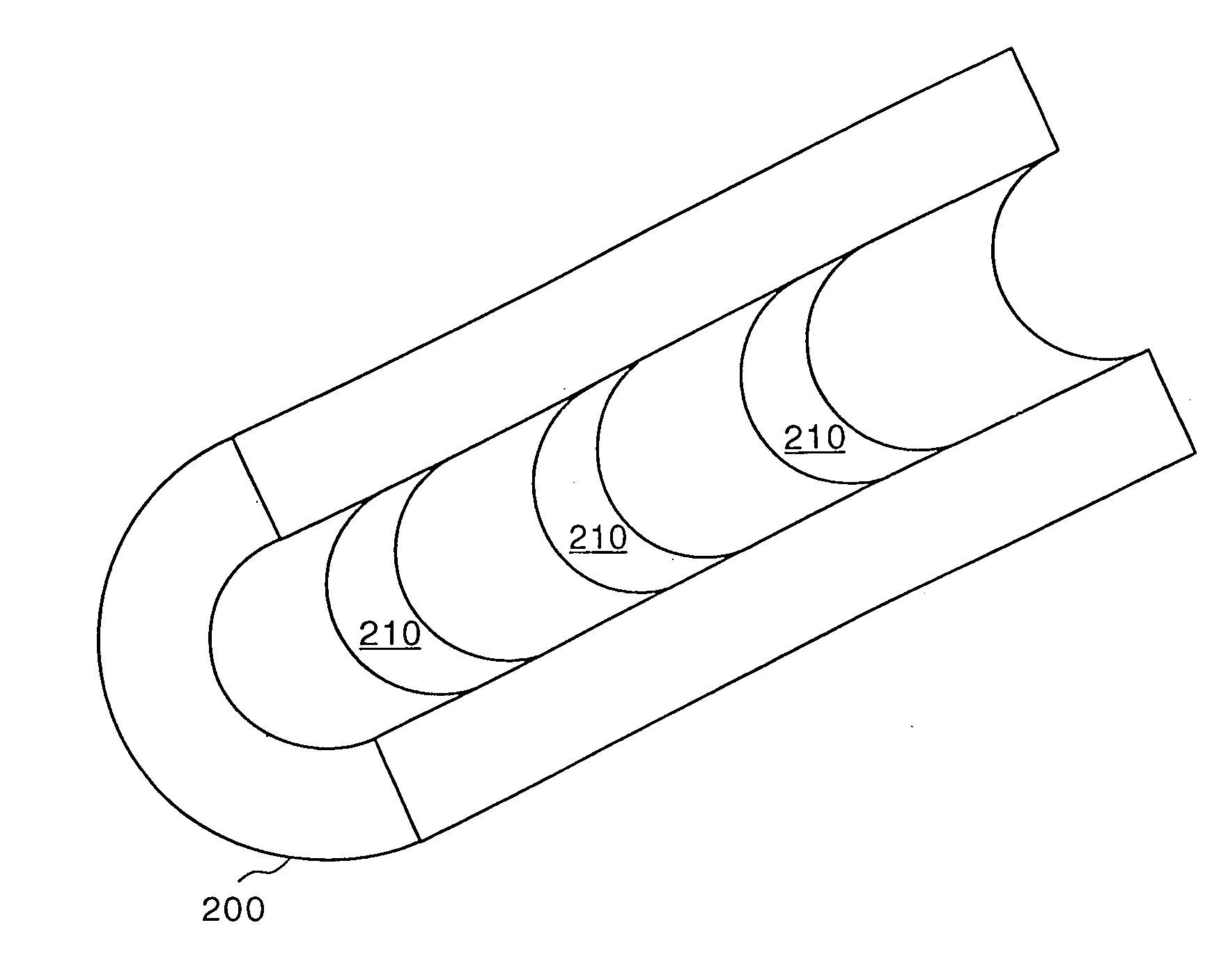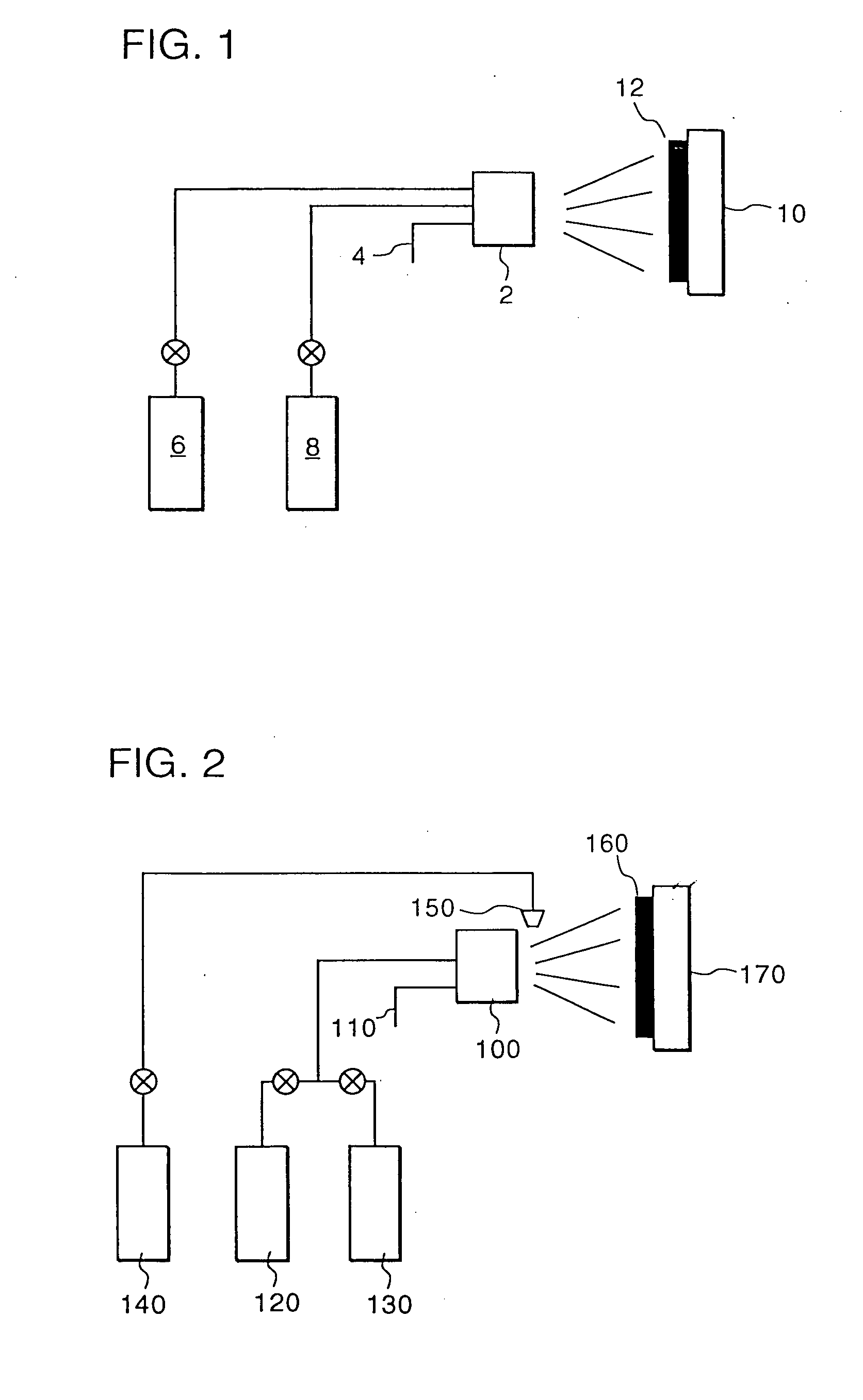Resistive heaters and uses thereof
a heater and resistivity technology, applied in the field of resistive heaters, can solve the problems of more difficult to form elements, low resistivity of layers, etc., and achieve the effects of improving adhesion, preventing bending or fracture of different layers, and improving thermal matching
- Summary
- Abstract
- Description
- Claims
- Application Information
AI Technical Summary
Benefits of technology
Problems solved by technology
Method used
Image
Examples
Embodiment Construction
[0039] We have discovered a metallic resistive layer (and methods of making same) that includes a metallic component that is electroconductive and an oxide, nitride, carbide, and / or boride derivative of the metal component that is electrically insulating. We have further discovered that this resistive layer, when coupled to a power supply, functions as a heater.
[0040] To deposit a layer that will generate heat when a voltage is applied, the layer must have a resistance that is determined by the desired power level. The resistance, R, is calculated from the applied voltage, V, and the desired power level, P, from:
R=V2 / P
[0041] The resistance is related to the geometry of the heater coating—the electric current path length, L, and the cross sectional area, A, through which the current passes—and also to the material resistivity, p, by the equation:
R=ρ L / A
[0042] Therefore, to design a layer for a given power level and a given geometry that will operate at a given voltage, one has o...
PUM
| Property | Measurement | Unit |
|---|---|---|
| resistivity | aaaaa | aaaaa |
| speeds | aaaaa | aaaaa |
| diameter | aaaaa | aaaaa |
Abstract
Description
Claims
Application Information
 Login to View More
Login to View More - R&D
- Intellectual Property
- Life Sciences
- Materials
- Tech Scout
- Unparalleled Data Quality
- Higher Quality Content
- 60% Fewer Hallucinations
Browse by: Latest US Patents, China's latest patents, Technical Efficacy Thesaurus, Application Domain, Technology Topic, Popular Technical Reports.
© 2025 PatSnap. All rights reserved.Legal|Privacy policy|Modern Slavery Act Transparency Statement|Sitemap|About US| Contact US: help@patsnap.com



